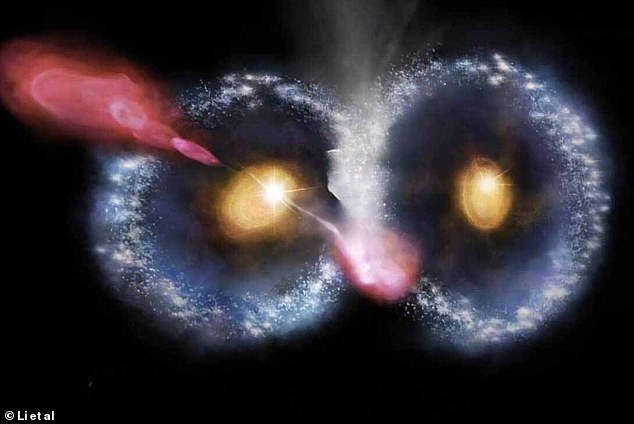
Webb Telescope Captures Rare Celestial ‘Cosmic Owl’ Phenomenon in Deep Space
Cosmic Owl: Webb Telescope Captures Rare Collision of Twin Ring Galaxies
(Featured Image: The "Cosmic Owl," two colliding galaxies resembling an owl’s face, captured by NASA’s James Webb Space Telescope.)
NASA’s James Webb Space Telescope (JWST) has unveiled a breathtaking image of two rare ring galaxies colliding 38 million light-years away. Dubbed the "Cosmic Owl" for its striking resemblance to an owl’s glowing eyes, the scene depicts a head-on merger between galaxies, showcasing shimmering blue rings with vibrant orange centers.
A Rare Galactic Phenomenon
Ring galaxies, characterized by their circular structures, are extremely uncommon, making up just 0.01% of known galaxies. The first discovery, Hoag’s Object, was identified in 1950. The Cosmic Owl’s symmetry—two nearly identical rings spanning 26,000 light-years each—suggests a collision between galaxies of similar mass and structure. Dr. Mingyu Li of Tsinghua University, leading the international team, describes the system as "unique," with the merger influencing both galaxies’ evolution.
(Image: Hoag’s Object, the first-known ring galaxy, highlighting the rarity of such structures.)
Active Galactic Nuclei and Star Formation
At the galaxies’ cores lie luminous orange regions known as active galactic nuclei (AGN), powered by supermassive black holes. These black holes, weighing 26 million and 67 million solar masses, drive intense energy emissions. Between the colliding rings lies the "beak" of the owl—a hotspot of rapid star formation, potentially birthing new planetary systems.
Why Galaxy Mergers Matter
Galactic collisions, driven by gravitational pull, reshape galaxies and drive cosmic evolution. The Cosmic Owl’s merger, detailed in a preprint study on arXiv, offers insights into how such events fuel star formation and redistribute matter. While most galaxy collisions result in mergers, only 25% of galaxies are currently merging.
(Schematic Image: Artistic depiction of colliding rings with binary AGN cores.)
Our Galactic Future
The Milky Way faces its own collision with the Andromeda Galaxy in about 4.5 billion years. Such mergers rarely destroy stars but alter galactic structures. Though Earth’s fate remains uncertain, our solar system may shift position.
JWST’s Cutting-Edge Vision
JWST’s infrared capabilities, combined with data from Chile’s ALMA and New Mexico’s VLA, revealed this cosmic spectacle. As the successor to Hubble, JWST’s precision helps scientists explore early-universe phenomena, from ancient galaxies to exoplanet atmospheres.
(Image: JWST in space, illustrating its role in deep-space discovery.)
Conclusion
The Cosmic Owl highlights the dynamic beauty of galactic interactions. Further simulations may decode how such mergers influenced early cosmic evolution, shedding light on the universe’s star-forming history.
Word count: ~600
Images suggested: 1) Cosmic Owl’s twin rings, 2) Hoag’s Object, 3) AGN schematic, 4) JWST in orbit (captions included).


